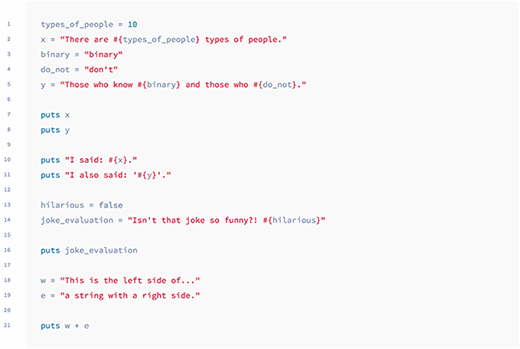Rails
WHAT IS RAILS?
- Rails, also known as Ruby on Rails, is a popular open-source web application framework written in Ruby programming language.
- It follows the Model-View-Controller (MVC) architectural pattern and focuses on convention over configuration, which means that it provides sensible defaults and conventions to streamline the development process.
- Rails is designed to simplify and speed up web application development by providing a set of pre-built components and tools.
Rails is a full-stack framework that includes everything needed to develop a web application, including a robust ORM (Object-Relational Mapping) layer for database interaction, routing system, view templates, and support for handling requests and responses.

USE OF RAILS
Rails is primarily used for developing web applications. It provides a comprehensive framework with built-in support for handling HTTP requests and responses, managing databases, rendering views, and routing requests to the appropriate controller actions. Rails’ convention over configuration approach and extensive libraries and plugins make it efficient and effective for building complex web applications.
Rails is well-suited for rapid prototyping due to its emphasis on convention and productivity. Developers can quickly set up a new Rails project, leverage the built-in generators and scaffolding tools to generate code, and rapidly iterate on the application’s features. This makes it an ideal choice for startups and projects where speed and agility are crucial.
Rails can also be used to develop APIs (Application Programming Interfaces) for building web services or providing data to mobile applications and other clients. Rails’ MVC architecture, along with features like routing, serialization, and authentication, make it straightforward to develop and expose APIs. Additionally, Rails supports popular API standards such as RESTful APIs and JSON API, simplifying the process of building and consuming APIs.
Rails can be used to develop custom content management systems (CMS) for managing website content. With Rails’ flexible architecture and ActiveRecord ORM, developers can create dynamic and customizable CMS platforms tailored to specific business needs. Rails’ support for managing relationships between content entities and its ability to handle user authentication and permissions make it a suitable choice for building CMS solutions.
WHAT ARE THE FEATURES OF RAILS?
Convention over Configuration – Rails follows the principle of “Convention over Configuration,” which means it has sensible defaults and conventions in place, reducing the need for manual configuration. This allows developers to focus more on writing application-specific code rather than spending time on repetitive configurations.
Model-View-Controller (MVC) Architecture – Rails implements the MVC architectural pattern, which separates an application into three distinct layers: the Model, View, and Controller. This separation of concerns promotes clean code organization, maintainability, and scalability. Models handle data storage and retrieval, views handle user interface rendering, and controllers handle the business logic and orchestrate the flow between models and views.


ActiveRecord ORM – Rails provides an Object-Relational Mapping (ORM) layer called ActiveRecord. It simplifies database interactions by providing an intuitive interface to query, manipulate, and associate database records using Ruby classes. ActiveRecord supports various databases, making it easy to switch between different database backends without changing code.
DRY (Don’t Repeat Yourself) Principle – Rails promotes the DRY principle, aiming to eliminate code duplication. It provides a set of tools and conventions that encourage reusability and modularity. Features like code generators, partial views, and reusable components (such as helpers and modules) help developers write less code and avoid redundancy.
THE BENEFITS OF LEARNING TO CODE WITH RAILS
Rapid Development – Rails follows the principles of convention over configuration and provides a rich set of tools and libraries. This results in accelerated development cycles, allowing developers to build web applications quickly. Rails automates many common tasks and provides generators and scaffolding tools to generate boilerplate code, reducing the time and effort required to set up a project.
Productivity and Efficiency – Rails provides a clean and intuitive syntax that emphasizes simplicity and readability. It offers a comprehensive set of libraries, known as “gems,” which cover a wide range of functionalities. These gems enable developers to leverage existing solutions, reducing the need to write code from scratch. Rails also promotes modular design and code reuse, enhancing productivity and efficiency.
Scalability and Maintainability – Rails follows the Model-View-Controller (MVC) architectural pattern, which promotes separation of concerns and code organization. This modular structure makes it easier to maintain and update codebases as applications grow in complexity. Rails also provides built-in support for database migrations, making it seamless to evolve the data schema over time. Additionally, Rails’ active community ensures ongoing support and updates, contributing to the long-term sustainability of projects.
Community and Ecosystem – Rails has a large and active community of developers and contributors. This vibrant community provides extensive documentation, tutorials, forums, and resources for learning and problem-solving. The ecosystem includes numerous gems and plugins that extend the capabilities of Rails and allow developers to leverage existing solutions for common tasks. The community’s collective knowledge and collaboration opportunities make it easier for developers to grow their skills and find support when needed.
